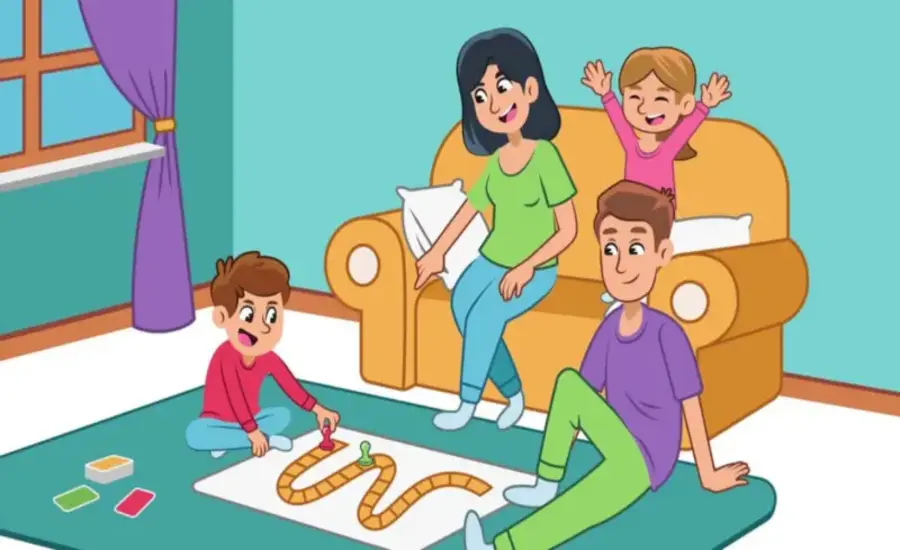Exploring Comic Sleepygmip Family Values 8
The realm of comic books, as both an art form and a narrative tool, has long been revered for its ability to blend visual storytelling with layered, immersive plotlines. Whether it’s through the exploration of grandiose, otherworldly adventures or more intimate, relatable family dynamics, comics have a way of conveying emotion, humor, and profound life lessons in ways that other mediums sometimes fail to do. One such comic series that has garnered a significant following is Sleepygmip Family Values. In this article, we delve deep into the heart of this beloved series, focusing specifically on the eighth installment, Family Values 8.
Though often overshadowed by other major comic franchises, Sleepygmip Family Values stands as a testament to the power of family-oriented storytelling, exploring universal themes of love, struggle, and togetherness through the lens of its unique, quirky characters. In this exploration, we will take a comprehensive look at the themes, artistic evolution, and cultural impact of Family Values 8, uncovering its significance in both the comic world and its broader cultural context.
The Beginnings of Sleepygmip: A Journey Through Family
The Sleepygmip series first emerged in the early 2000s, an era marked by a burgeoning interest in alternative and indie comics. Unlike many of its contemporaries, Sleepygmip did not focus on the flashy spectacles of superheroism, nor did it explore dystopian futures or epic cosmic wars. Instead, it focused on the simpler, often more complex dynamics of family life. The characters at the center of the story are not grandiose figures, but regular people—albeit ones who happen to have peculiar quirks and extraordinary challenges.
At the core of Sleepygmip is the central family, whose name comes from the fictional town of Sleepygmip, a sleepy, somewhat surreal location where odd things are commonplace. The series centers around the characters’ struggles and triumphs, focusing on the relationships that bind them together and occasionally tear them apart. The family’s dynamics are complex, with themes of love, loss, forgiveness, and generational tension often at play.
Over the course of the series, the Sleepygmip family has undergone significant evolution. Early issues, especially those in the first few volumes, leaned heavily on character development and humor, with an almost slice-of-life feel. However, as the series progressed, it grew more ambitious in its storytelling, introducing darker themes, external conflicts, and deeper explorations of identity, which became a hallmark of the later volumes.
The Evolution of Family Values: A Shift in Tone
The Family Values arc represents a pivotal moment in the series’ history, as it marked a shift in both tone and narrative style. Starting with Family Values 1, the arc introduces a more mature and introspective exploration of the family unit, its trials, and its inevitable breakdowns. But it was with Family Values 8 that the series truly came into its own, taking bold steps in its narrative and visual approach.
One of the most notable developments in Family Values 8 is its exploration of generational conflict. As the characters have grown and evolved, so too have their perspectives. The older members of the family, having weathered countless personal and familial storms, find themselves at odds with the younger generation, whose idealism and aspirations often clash with the realities of adulthood. This tension plays out in subtle, often poignant ways, adding depth to the overall narrative.
Another key aspect of Family Values 8 is its engagement with the theme of forgiveness. Throughout the arc, the characters wrestle with mistakes from the past and the difficulties of mending fractured relationships. There is a noticeable emphasis on the idea that healing is a slow, often painful process, and that true reconciliation requires not just understanding but also sacrifice. This emotional complexity elevates Family Values 8 beyond a mere exploration of familial bonds, turning it into a profound meditation on personal growth and the challenges of reconciling one’s past with one’s future.
The Visual Evolution: From Simple Illustrations to Rich, Layered Art
One of the most striking aspects of Sleepygmip as a series is its visual transformation. The early volumes of the comic were known for their simplistic, almost childlike art style. This was not necessarily a disadvantage—rather, it allowed for the focus to remain on the characters and the dialogue, making it a more approachable and accessible comic. However, with Family Values 8, the art underwent a dramatic shift.
The illustrations in Family Values 8 are more intricate and layered than anything seen in previous volumes. The style is rich with texture, using crosshatching and detailed shading to give depth to the environments. The characters, too, are drawn with greater complexity, with subtle facial expressions and body language that convey a wide range of emotions. This new art direction helps to amplify the emotional weight of the story, making each panel a visceral experience.
The color palette used in Family Values 8 also plays a significant role in the tone of the comic. Whereas earlier volumes relied on brighter, more vibrant hues, the eighth installment embraces muted tones and soft gradients. This shift in color not only aligns with the more somber and reflective themes of the narrative but also mirrors the emotional journeys of the characters. The contrast between light and dark, both literally and figuratively, creates a sense of tension and release that enhances the storytelling.
The integration of visual metaphors, such as recurring motifs and symbolic imagery, also adds a layer of depth to the comic. For example, the use of nature scenes—trees, rivers, and open skies—serves as a reflection of the characters’ internal landscapes, emphasizing themes of growth, change, and the cyclical nature of life.
Key Themes in Family Values 8
At its core, Family Values 8 is an exploration of the emotional complexities inherent in family life. However, the comic touches on several other themes that resonate deeply with readers. These themes are not only integral to the plot but are woven into the very fabric of the characters’ identities.
Forgiveness and Redemption
One of the most powerful themes in Family Values 8 is the idea of forgiveness. Throughout the comic, characters grapple with past mistakes and the difficulty of seeking or offering forgiveness. The tension between wanting to move on from past hurts and the lingering scars they leave behind is a driving force in the story. This theme is particularly poignant in the context of family, where history is shared and the bonds of love and resentment are often inseparable.
The narrative explores how forgiveness, both of oneself and others, can lead to healing but is not always easy or straightforward. The complexities of guilt, pride, and vulnerability are laid bare, allowing readers to reflect on their own experiences of reconciliation and the challenges of mending broken relationships.
Generational Conflict
Another theme that comes to the forefront in Family Values 8 is generational conflict. As the family members grow older, they begin to see the world differently, and the expectations they have for one another start to clash. This generational divide is most evident between the parents and their children, who are navigating their own paths while still being influenced by the family legacy.
The older generation, having experienced the weight of life’s challenges, tends to adopt a more pragmatic, sometimes cynical view of the world. In contrast, the younger generation, filled with hope and idealism, struggles to understand the choices their parents made and the mistakes they wish to avoid. This conflict forms the emotional core of Family Values 8, as both sides attempt to understand each other while reconciling their different worldviews.
Personal Growth and Identity
Identity is another crucial theme explored in Family Values 8. The characters’ sense of self is continuously evolving, and their struggles with who they are and who they want to be are central to the narrative. This theme is explored through both internal monologues and interactions with other characters, reflecting the universal human experience of trying to understand one’s place in the world.
In particular, the comic highlights the idea that identity is not static. The characters change over time, often in ways they do not fully understand or control. The journey toward self-acceptance and understanding is a key narrative thread, with each character taking their own path to emotional and psychological growth.
Reception and Impact
Since its release, Family Values 8 has been widely praised by both critics and fans for its mature storytelling and its ability to tackle complex emotional and philosophical issues. The comic’s emphasis on family dynamics and generational conflict resonated strongly with readers, many of whom saw themselves reflected in the characters’ struggles.
Moreover, Family Values 8 was seen as a significant step forward for the Sleepygmip series, showcasing its potential for deeper, more meaningful storytelling. The comic’s mix of humor, heartbreak, and hope has made it a standout in the indie comic scene, earning it accolades for its emotional depth and its visual innovation.
The influence of Family Values 8 can also be seen in other works that followed, with many comics embracing similar themes of family, forgiveness, and personal growth. Its impact on the broader comic landscape is undeniable, and it has cemented its place as a modern classic.
Conclusion
Sleepygmip Family Values 8 is not just a comic; it is a reflection of the messy, beautiful, and often painful realities of family life. Through its unique blend of humor, pathos, and visual storytelling, it presents a narrative that speaks to universal experiences while still maintaining the distinct, quirky charm that has made the Sleepygmip series so beloved. The eighth volume of Family Values is a powerful meditation on growth, forgiveness, and the challenges of understanding both oneself and others. It stands as a testament to the enduring power of comics to explore deep emotional themes and connect with readers on a profound level.






